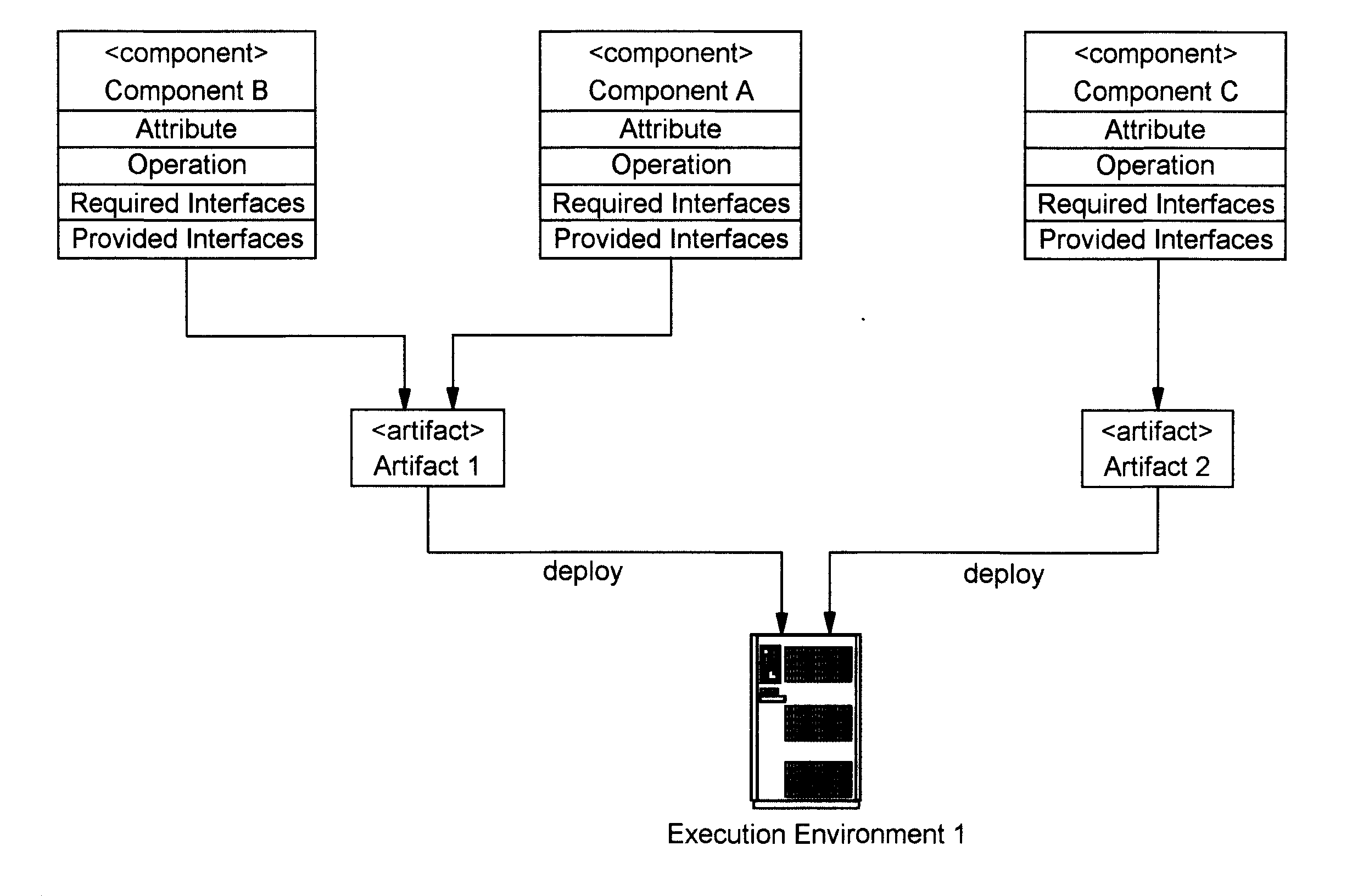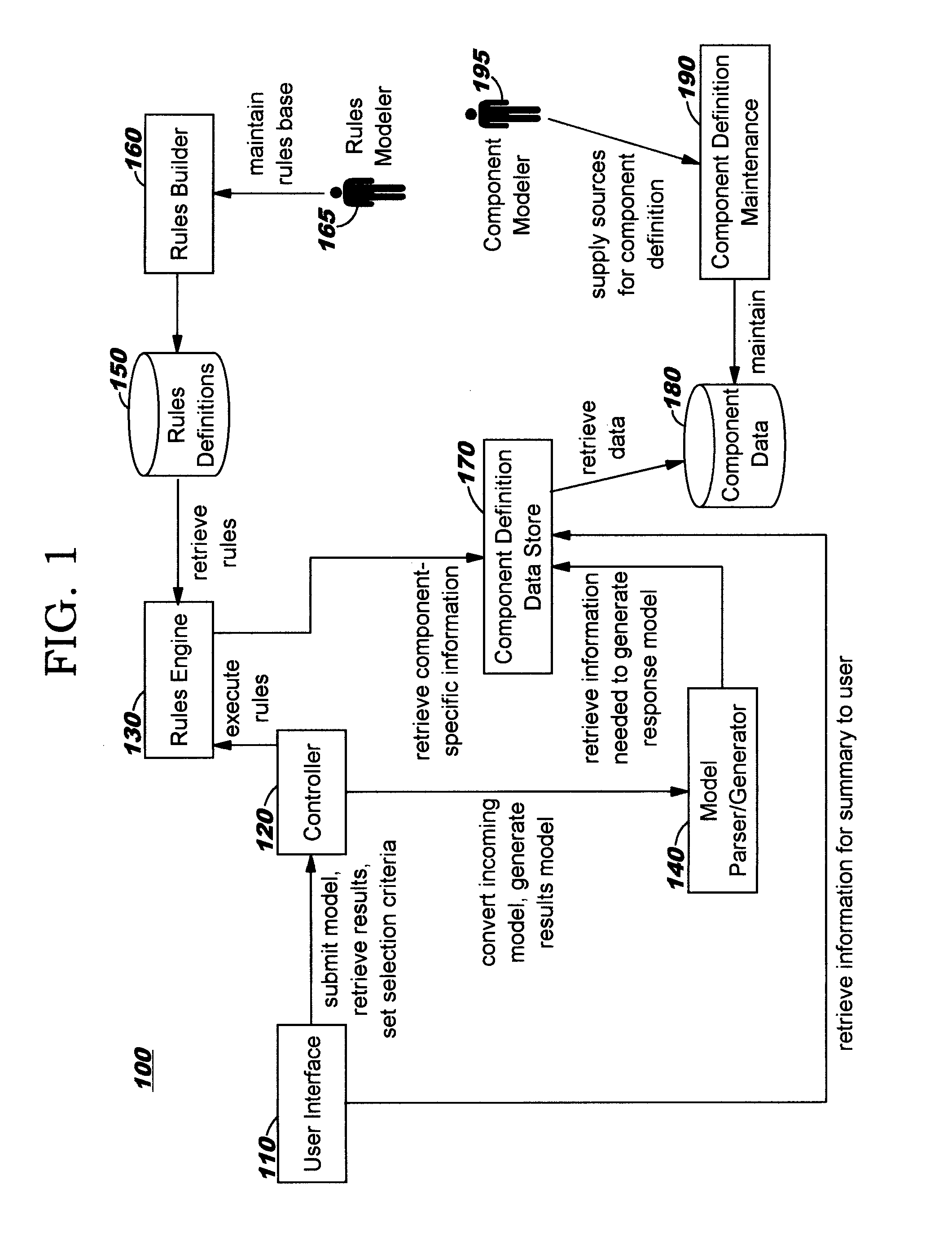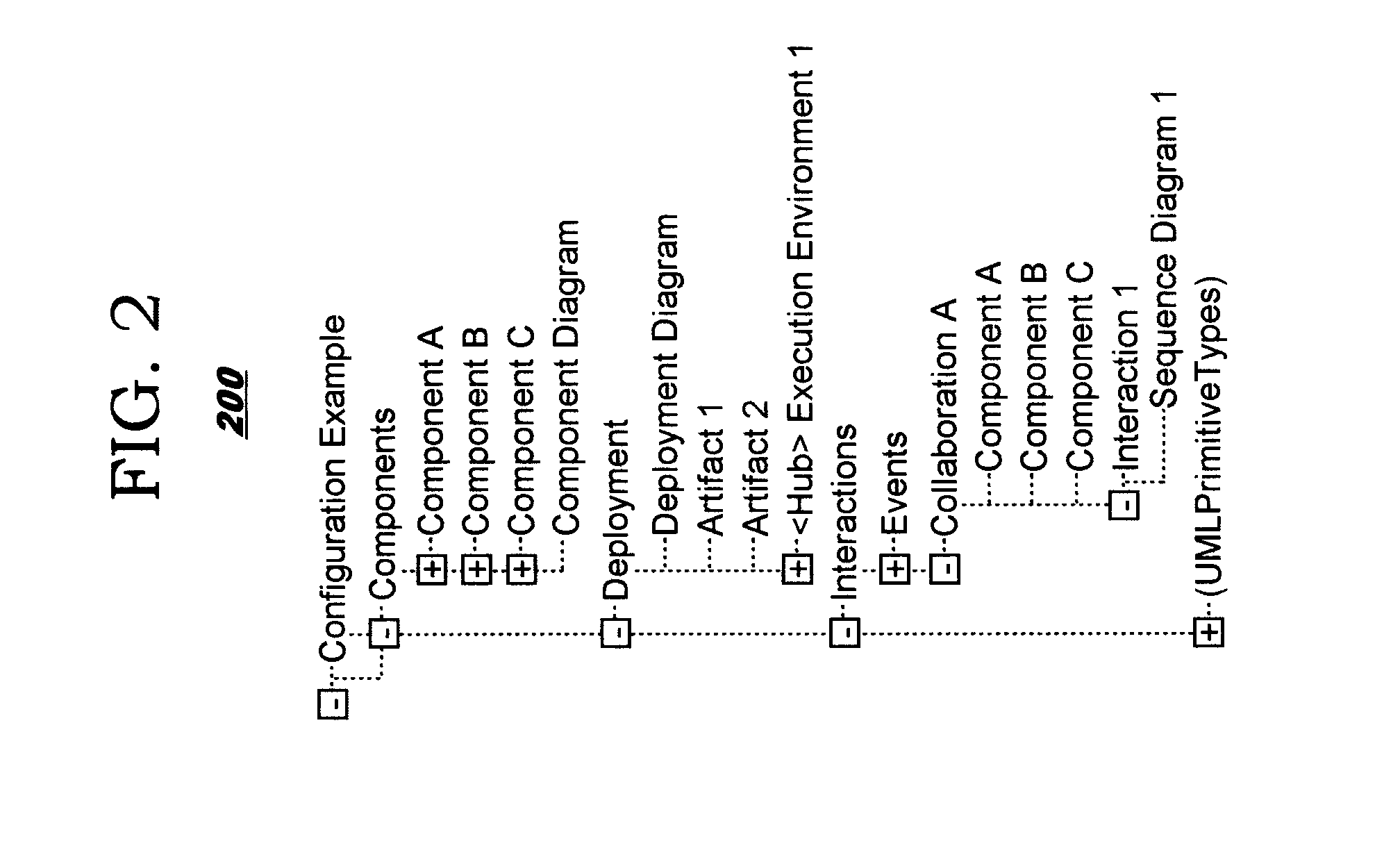Configuring Assembly of a System using Supplied Architectural Artifacts
- Summary
- Abstract
- Description
- Claims
- Application Information
AI Technical Summary
Benefits of technology
Problems solved by technology
Method used
Image
Examples
Embodiment Construction
[0015]As noted earlier, component selection may be a tedious and error-prone process when using known techniques. The present inventors are not aware of any previously-existing autonomous processes or tools that suitably perform this task. An embodiment of the present invention is directed toward filling this gap by providing a representational scheme and algorithm to autonomically configure a system using pre-built components, while (inter alia) checking for compatibility issues among selected ones of the components and evaluating the adaptability of the selected components. Accordingly, an embodiment of the present invention programmatically determines a configuration for assembly of a system by identifying and evaluating reusable components. A representational scheme for the candidate components is disclosed, along with an algorithm to evaluate and match the components in view of the requirements of the target system. Optionally, pricing information is included for the components...
PUM
 Login to View More
Login to View More Abstract
Description
Claims
Application Information
 Login to View More
Login to View More - R&D
- Intellectual Property
- Life Sciences
- Materials
- Tech Scout
- Unparalleled Data Quality
- Higher Quality Content
- 60% Fewer Hallucinations
Browse by: Latest US Patents, China's latest patents, Technical Efficacy Thesaurus, Application Domain, Technology Topic, Popular Technical Reports.
© 2025 PatSnap. All rights reserved.Legal|Privacy policy|Modern Slavery Act Transparency Statement|Sitemap|About US| Contact US: help@patsnap.com



